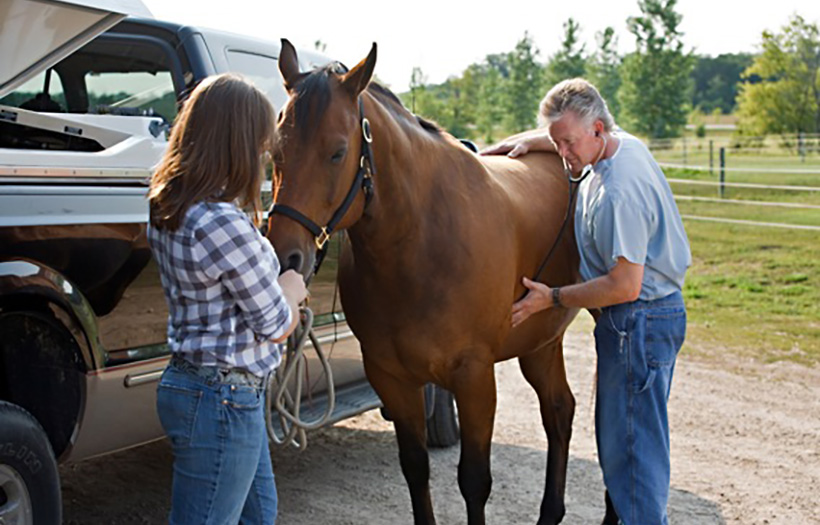What is “Normal” for my horse?

We’ve all heard the warnings for proper horse care: monitor your horse frequently, and if something is not normal, call your veterinarian. But what is “normal” for your horse? While it is a good idea to pay attention to your horses’ vitals when you do not suspect that anything is wrong in order to establish a baseline, there will be times when that is not feasible. What if you have a new horse on your place that you fear is not feeling quite right? Or perhaps you are taking care of a friend’s horse and are not familiar with how this horse normally functions?
The following is what is considered “normal” for most horses – following this chart when you suspect a problem will help pinpoint what is wrong and allow you to give a more accurate report to your vet.
- Temperature: Adults – 99.5°F – 100.5°F; Foals 100.5°F – 101.5°F
- To take your horse’s temperature: Use a large animal thermometer or a human rectal thermometer held in the rectum for 2 minutes. *Note – temperature will be elevated after exercise.
- To take your horse’s temperature: Use a large animal thermometer or a human rectal thermometer held in the rectum for 2 minutes. *Note – temperature will be elevated after exercise.
- Heart Rate: Adults – 24-36 beats per minute; Foals – 40-60 beats per minute.
- To take a heart rate: Using a stethoscope, listen at the wall of the chest, just below the elbow.
- To take a heart rate: Using a stethoscope, listen at the wall of the chest, just below the elbow.
- Respiratory Rate: Adults – 12-24 breaths per minute; Foals – 32-54 breaths per minute.
- Note: respiratory rate may be influenced by stress, excitement, or exercise.
- Note: respiratory rate may be influenced by stress, excitement, or exercise.
- Mucous Membranes: Mucous membranes should be pink and moist, with a capillary refill rate of 1-2 seconds.
- To test the capillary refill time: Part the horse’s lips to expose the gums. If you press gently and briefly on the upper jaw with your thumb you will see the blood is forced from the gum. Count how long it takes for the gum to return to its normal color.
- Always check mucous membranes in normal light or with a flashlight. Do not use fluorescent lighting, which can cause membranes to look unusually pale. Abnormal membranes are pale/white, blue, dark red, or purple in color.
Physical Exam:
- Look for differences in the left vs. right sides of the body.
- Check for discharge from the eyes, nostrils, mouth, rectum, vulva, sheath, wounds, abscesses, or any other evidence of trauma.
- Note if the horse has passed manure or if there is diarrhea on its tail.
- Listen on both sides of the flanks for normal gastrointestinal activity.
- Check to see if the abdomen is distended.
- Check to see if the horse is working hard just to breathe
Attitude:
- Is the horse alert and interested, dull or depressed, or acting differently than normal?
- Can the horse walk and move normally at the walk and trot?
- Is the horse bearing weight equally on all four limbs?
- Has the horse eaten or drunk and is there evidence of fresh manure?
- Note if the fencing/stall shows signs of a struggle.
- Be sure to check other horses at your facility for similar signs/symptoms.
